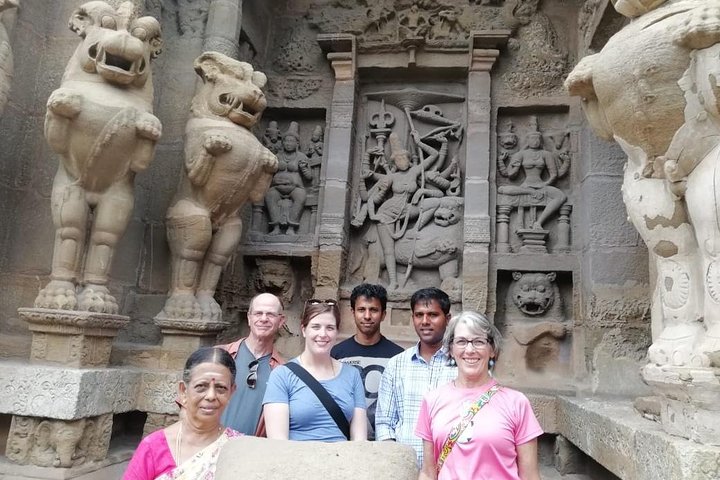Exploring the Timeless Beauty of Pallava Architecture in Tamil Nadu
Drawn by the allure of ancient architecture, I embarked on a journey to Kanchipuram and Mahabalipuram, eager to explore the wonders of Pallava architecture. What I discovered was a rich tapestry of history and culture that left me in awe.
A Journey Through Time: The Temples of Kanchipuram and Mahabalipuram
As I embarked on the Chennai Day Tour to explore the architectural marvels of the Pallava dynasty, I was filled with anticipation. Having grown up in a multicultural household, I have always been fascinated by the rich tapestry of Asian cultures. This tour promised to be a deep dive into the ancient world of South Indian architecture, and it did not disappoint.
Our journey began in Kanchipuram, the capital of the medieval South Indian Kingdom of the Pallavas. The first stop was the Ekambareswarar Temple, a magnificent specimen of Pallava architecture built in 600 AD. As I walked through the temple’s grand corridors, I couldn’t help but marvel at the intricate carvings and the sheer scale of the structure. The temple’s towering gopuram, or entrance tower, stood as a testament to the architectural prowess of the Pallavas.
Next, we visited the Kailasanathar Temple, another masterpiece from the Pallava era. The temple’s stone carvings depicted various deities and mythological scenes, each telling a story of its own. Our guide, Vijay Kalidas, a native Tamil with an encyclopedic knowledge of temple history, enriched our experience with tales of the Vedic classics and the millions of gods and their manifestations. His insights added a layer of depth to our understanding of the temples and their significance in Tamil culture.
The Coastal Wonders of Mahabalipuram
Leaving Kanchipuram, we made our way to the ancient sea port of Mahabalipuram. Known for its rock-cut structures, Mahabalipuram was a bustling trading post during the Pallava dynasty. Our first destination was the Pancha Rathas, or the Five Chariots, a group of monolithic temples dedicated to the Pandavas from the epic Mahabharata. Each temple, carved from a single rock, was a marvel of engineering and artistry.
As we continued our exploration, we arrived at Arjuna’s Penance, a massive bas-relief that depicted scenes from the Mahabharata. The intricate carvings, spanning 100 feet by 45 feet, were a testament to the skill and creativity of the artisans of the time. It was here that I truly appreciated the blend of art and spirituality that defines Pallava architecture.
Our final stop in Mahabalipuram was the iconic Shore Temple, a structural temple made of granite that has withstood the test of time. Standing by the shore, the temple served as a beacon for seafarers in the 8th century. The sound of the waves crashing against the rocks added to the temple’s mystique, creating a serene and contemplative atmosphere.
Embracing Tamil Culture
Throughout the tour, Vijay and our driver Venkat ensured that we experienced the essence of Tamil culture. From visiting authentic Tamil restaurants to interacting with local craftsmen, every moment was an opportunity to immerse ourselves in the local way of life. Vijay’s connections with the local community allowed us to capture some unforgettable moments, including posing with Tamil locals at the temples.
Reflecting on the day, I realized that this journey was more than just a tour of ancient temples. It was an exploration of a culture that has thrived for centuries, a culture that continues to inspire and captivate those who seek to understand it. The Pallava architecture, with its intricate carvings and monumental structures, is a testament to the creativity and ingenuity of a bygone era.
As I left Kanchipuram and Mahabalipuram, I carried with me not just memories of stunning temples, but a deeper appreciation for the rich cultural heritage of Tamil Nadu. This experience was a reminder of the importance of preserving and celebrating the diverse traditions that make Asia such a vibrant and fascinating continent.










































